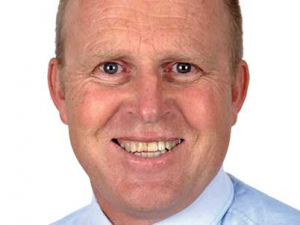Recently there has been an increased dairy industry focus on getting more out of pasture.
I believe farmers should also be focusing on getting more out of their pasture silage; the first step is making a quality product.
High quality pasture silage is a valuable supplement for increasing milk production or condition score gain, but poor quality silage is at best an expensive filler for dry cows.
A trial by DairyNZ researchers compared the milk performance of cows fed high (10.4 MJME/kgDM), medium (9.4 MJME/kgDM) and low (8.3 MJME/kgDM) quality pasture silage in the spring, summer and autumn (1). On average, cows fed high quality pasture produced 0.22 kgMS/cow/day more than the cows fed low quality pasture silage. At a $4.50/kgMS payout, this equates to an increased return of almost $1.00/cow/day for the high quality silage.
Making high quality pasture silage requires the combination of a quality pasture, an excellent fermentation and excellent stack or bale and feed-out management. The following steps are key:
1. Harvest at the correct time
The feed value of the ryegrass plant drops rapidly as it enters its reproductive phase. Research suggests that the drop can be as much as 0.3 MJME/kgDM per week of closure (2). Harvest pasture silage no later than 35 - 40 days after the last grazing or when a maximum of 10% of the ryegrass seed heads have emerged.
2. Wilt to at least 28% drymatter
Wilting concentrates the plant sugars and reduces the risk of nutrients being lost from the silage stack as leachate. Silage leachate is surplus water from silage which carries soluble sugars, proteins and nutrients with it as it seeps out of the stack. Silage leachate is one of the most potentially contaminating wastes generated on a farm. It is considered to be 200 times stronger than raw domestic sewage and 40 times stronger than dairy shed waste (3).
3. Add a quality silage inoculant at harvest-time
Quality silage inoculants contain the right strains of lactic acid producing bacteria to ensure a good fermentation. They can help to reduce fermentation losses while at the same time improving silage quality. Trials show that when fed to dairy cows, Pioneer brand 1127 inoculated pasture silage gives 30 litres more milk per tonne and generates a return of at least $2.50 per dollar invested (4). But not all inoculants are the same: local research has shown some products simply don’t work. Look for four things when choosing an inoculant: guaranteed bacteria numbers of the label, trial data that shows the inoculant works, proven application technology and a company which understands silage and can help you get the best return from it.
4. Compact and seal properly
For stacked silage, spread the material into 100 - 150mm layers and compact until the surface is firm. Use a high quality plastic cover and weigh it down with tyres that are touching. Seal the edges with sand or lime. For baled silage, use high quality wrap and apply it according to the manufacturer’s recommendations (i.e. use the recommended stretch factor and number of wraps).
It costs roughly as much to produce rubbish silage as it does to make high quality silage. Focusing on the silage making process this spring will really help improve your returns.
1 Macdonald et al. 2000. The effect of pasture silage quality on milk production and liveweight gain of dairy cows. Proceedings of the New Zealand Society of Animal Production 60: 253-255.
2 Wren & Mudford. 1996. Making quality silage. Proceedings of the Ruakura Dairy Farmers Conference 49:100-105
3 Tikkisetty et al, 2004. Environmentally friendly silage management. SIDE Conference.
4 Drymatter recovery data is based on 16 pasture silage trials conducted at independent European research stations that were submitted to the official German silage additive approval scheme. Milk production per tonne of pasture silage fed is based on three independent dairy trials. Assumes a milksolids payout of $4.25/kgMS.
• Ian Williams is a Pioneer forage specialist This email address is being protected from spambots. You need JavaScript enabled to view it.


















